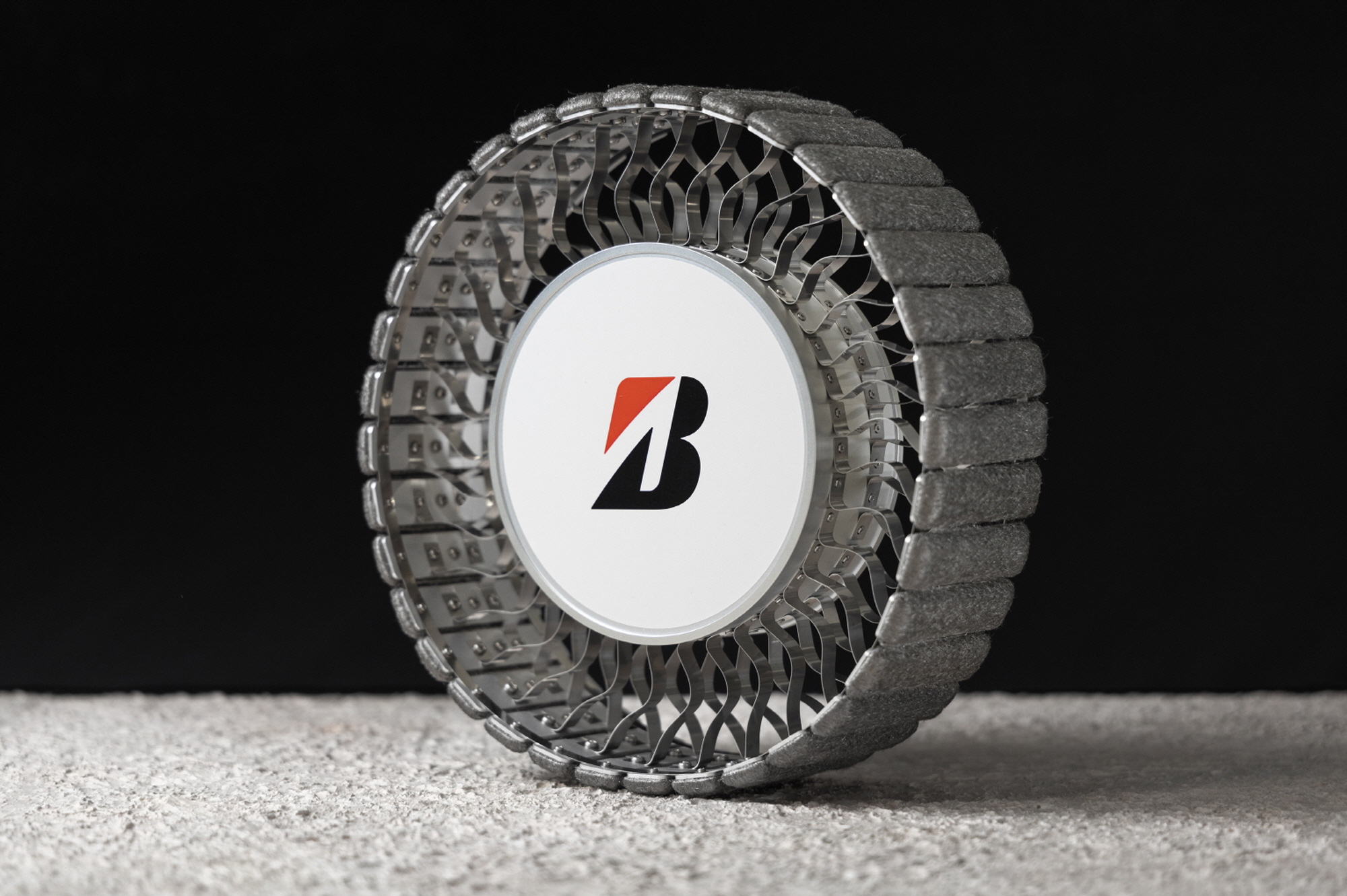
Bridgestone has announced the development of a new lunar exploration vehicle tire with enhanced performance through research and development efforts. The concept model of the newly developed tire was unveiled at the 39th Space Symposium, the largest space-related exhibition in the United States, held from April 8 to 11, 2024, in Colorado Springs. It was displayed in the Japanese space industry pavilion organized by the Japan Aerospace Exploration Agency (JAXA).
The development of the lunar exploration vehicle tire is founded on Bridgestone’s basic principle of business management: “Tires sustain life.” Bridgestone, which has supported the evolution of mobility on all roads around the world, is now extending its challenges to space exploration to further support the advancement of mobility from the ground to outer space.
Bridgestone’s commitment to the evolution of mobility has been honed through its technological innovations adapted to extreme environments, such as those found in motorsports. Through the lunar exploration vehicle tire development project, Bridgestone aims to play a crucial role in future mobility that will endure extreme conditions and perform exploration activities on the moon, which will become humanity’s new frontier.
The first-generation lunar exploration vehicle tire developed by Bridgestone employed unique technology inspired by the footpads of camels crossing deserts. The tread of the tire, which contacts the moon’s surface composed of ‘regolith’—a mix of dust, soil, and rock fragments—utilizes felt made of metal materials to enhance friction between the tire and regolith, resulting in outstanding grip on the lunar surface. The second-generation tire, building upon this technology, incorporates a skeletal structure that meets the durability and grip required for harsher lunar terrains, developed through Bridgestone’s research and development efforts. Bridgestone’s air-free tire technology has been applied to the new tire’s skeletal structure, using lightweight metal spokes while segmenting the tread to withstand the extreme lunar surface conditions, such as rocky terrains, sand, vacuum, extreme temperature changes, and radiation exposure.
This innovative structure achieves a high level of durability and performance on the lunar surface. Additionally, advancements in digital technology have allowed optimization of the shape and thickness of the metal spokes through structural simulations. The optimized metal spokes maintain flexibility while minimizing localized deformation, enhancing tire durability and increasing the contact area with the lunar surface through segmented tread, thereby reducing tire sinking and improving grip and mobility performance. Through this ‘surface contact mastering’ technology, Bridgestone has enabled human exploration of the moon from beginning to end with enhanced mobility.
The lunar vehicle project represents one of Bridgestone’s mid-term business plans (2024-2026) aimed at expanding “Air Free®” technology from the Earth to outer space and the moon’s surface. Bridgestone anticipates creating more value by applying the refined technologies developed in the moon’s extreme conditions to the tires used on Earth. Furthermore, through the lunar exploration vehicle project, Bridgestone aims to showcase its spirit of challenge and excellent research and development capabilities to partner companies, strengthening their trust and empathy. Bridgestone is also establishing crucial networks to expand its international research and development collaboration within the space industry, seeking opportunities to co-create value with global partners in various fields.
The values Bridgestone pursues through the lunar exploration vehicle project align with the company’s commitment named “Bridgestone E8 Commitment,” particularly focusing on “Extension,” which emphasizes the unwavering dedication to uninterrupted mobility and innovation for the movement of people and goods.
Lee Sang-jin daedusj@autodiary.kr

